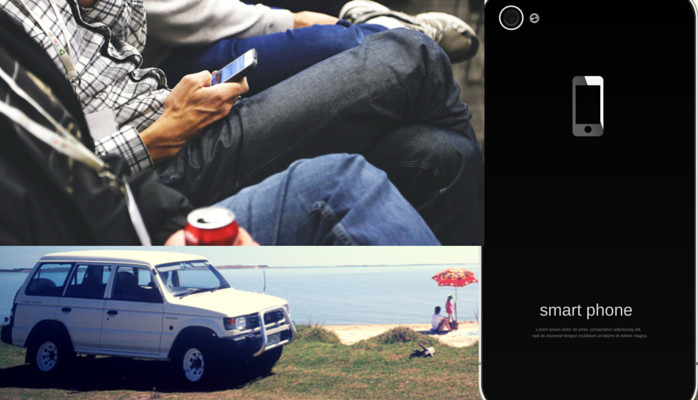
Internet of Things (IoT) – Connected Cars – Hotbed of Innovation and Patents
Going by technology trends, future of tech innovations strongly depends upon the Internet of Things, commonly referred to as IoT, which facilitates communication between everyday objects via Internet. Such communication is amplified and brought to consumer utility by the powerful smartphones, tablets and wearable devices.
IoT Elements
From the aspect of technology, IoT requires certain essential elements for implementation, including:
(a) Wireless Internet Connection
(b) Embedded Sensors
(c) Communication Software
(d) Admin Interface
(e) Encryption Algorithms for Security
(f) Other Electronic Devices (Appliances)
(g) Operating Platforms
(h) Data Management Protocol
IoT Patents
With regards to patent protection pertaining to IoT, there are certain challenges that companies may face, primarily because:
(i) IoT includes multiple technological aspects, hence filing patents to cover all elements may get complicated.
(ii) IoT components pertaining to pure software and business methods may not be patentable.
(iii) However, hardware components may be eligible for patent protection, such as, for example, wearable devices, gadgets, accessories, electronic appliances, and the like.
SEP and FRAND
As IoT based innovations are bound to use well known standard technology features, issues related to SEPs (Standard Essential Patents) and FRAND (Fair, Reasonable, and Non-Discriminatory) Patent License terms can also result in complications when it comes to patent protection, patent infringement and patent monetization. This can be a potential cause of commercial disputes among companies, similar to the smartphone patent war that began after iPhone was launched.
IoT Patent Family
Companies working towards developing IoT innovations are broadly filing patents in following sectors:
- Networking – Wired and Wireless
- Computing – Algorithms, Encryption and Memory Management
- Infrastructure – Control Systems (Sensors), Power Management and Hardware
Exemplary Innovations – BLE or Bluetooth Low Energy
BLE forms key element of IoT innovations as it provides multiple features and advantages, including, wireless technology, ultra-low power consumption, low cost, enhanced range, multivendor interoperability, and provisions to enhance devices like watches, toothbrushes, toys etc.
BLE Patents – Main Elements
Patents pertaining to BLE cover following aspects:
- Master Devices
- Access Points
- Mobile Devices
- Low Power Consumption Elements
- Networking Aspects
- Electronic Devices
Major players who have actively filed patents claiming BLE technology aspects include Samsung, Broadcom, Blackberry, Qualcomm, Google, AT&T, Sonly, Apple, ZTE and Nokia.
Connected Cars – Digital Dashboards and Patents – Emerging Battle in Mobile Technology
Smartphone patent litigations across the world gained traction during early years of influx of path-breaking devices, including the likes of Apple iPhone and Samsung series (S, Note, Galaxy etc.). Most of such lawsuits seem to have settled by now excluding a few that are still ongoing but the battlefront of patents in mobile technology has now shifted to a new sector, i.e. in-car technology facilitating connected cars via digital dashboards that represents one of the hottest categories among Internet of Things (IoT).
Patent Family – Types of Patent
The connected cars segment including in-car technologies is bound to have an interesting and diverse range of patents considering the fact that the industry will be mostly governed by following stakeholders:
- Car Manufacturers (Ford, GM, VW, BMW)
- Equipment Manufacturers (Bosch, Denso)
- Electronics & Software Companies – Tech Innovators (Apple, Google, Panasonic, Motorola)
Among above-mentioned categories, equipment manufacturers are expected to lead the patent filings as such companies possess manufacturing capabilities covering multiple aspects of the vehicles. However, automakers have started to catch up as most of new age vehicles are launched with numerous in-built technology features.
Potential technology areas that are experiencing innovative developments include:
(i) In-car Navigation
(ii) Telematics
(iii) In-car Entertainment (Media)
(iv) Commercial Functions (Search, Advertising, Payments)
Among such technology sectors, navigation innovations are generally in majority whereas commercial innovations form a steady and small fraction of patents, probable considering the fact that innovations are directly connected with corresponding economic benefits.
Patent Strategy – IoT and Connected Cars
Companies working in technology sectors such as IoT and Connected Cars, which are capable of disrupting the industry, need to have a well-formulated patent strategy in place to tackle the associated challenges. First and foremost, it is crucial to analyse appropriate Freedom To-Operate (FTO) by reviewing scope of existing patents with a view to obtain product clearance and to avoid patent infringement. Secondly, validity of in-house patents has to be ascertained along with patentability analysis of in-house innovations. Lastly, a strong and enforceable patent strategy can be formulated if global patent landscape studies are conducted as innovations in the field of IoT and Connected Cars are spanned across multiple jurisdictions.
Rahul Dev is a Patent Attorney & International Business Lawyer practicing Technology, Intellectual Property & Corporate Laws. He is reachable at info (at) techcorplegal (dot) com & @rdpatentlawyer on Twitter
